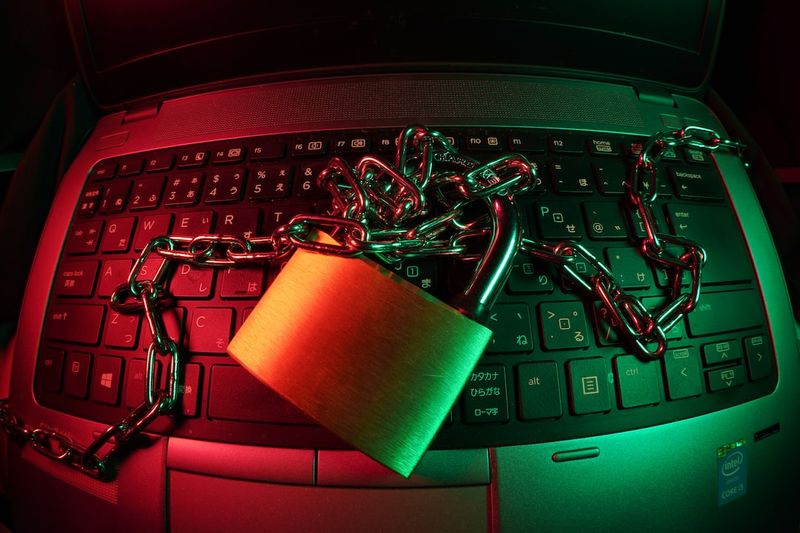Expert Strategies: Defending Against Credential Phishing
Cybersecurity and the Threat of Credential Phishing
As the digital landscape continues to grow and evolve, the threat of cybercrime is an ever-present danger. One of the most prevalent and effective forms of cyber attack is credential phishing. Cybercriminals utilize this technique to obtain sensitive information such as usernames, passwords, and personal data from unsuspecting individuals. The implications of falling victim to such an attack can be severe, leading to identity theft, financial loss, and even reputational damage.
Understanding the Tactics: Credential Phishing and Catphish
Credential phishing typically occurs through deceptive emails, text messages, or instant messages that appear to be from a legitimate source, such as a bank, social media platform, or a reputable organization. These messages often contain enticing language, urgent requests, or alarming claims, designed to manipulate individuals into divulging their sensitive information.
A related subset of credential phishing is catphishing, where cybercriminals create a false persona or impersonate someone known to the target in order to elicit trust and increase the likelihood of obtaining sensitive information. Catphishing attacks are particularly effective as they exploit personal connections and exploit the inherent trust that exists between individuals.
The Importance of Internet Security
Given the growing sophistication of cybercriminals and their ability to mimic legitimate communication, it is essential for individuals and businesses to prioritize internet security measures. Robust online security practices can significantly decrease the risk of falling victim to credential phishing attacks.
Multi-factor Authentication (MFA)
Implementing multi-factor authentication is one of the most effective techniques individuals and businesses can employ to protect against credential phishing. MFA, also known as two-factor authentication, adds an additional layer of security by requiring users to provide multiple forms of identification, such as a password and a unique verification code sent to their mobile device.
Security Awareness Training
Education is an essential aspect of internet security. By providing thorough and regular security awareness training, individuals can learn to recognize phishing attempts and develop the necessary skills to protect themselves and their organizations. Training should cover topics such as identifying suspicious emails, verifying the authenticity of websites, and understanding the different tactics employed by cybercriminals.
Phishing Simulation Exercises
Conducting regular phishing simulation exercises can help organizations assess the vulnerabilities of their employees and identify areas that require further attention. These exercises involve sending simulated phishing emails to employees and monitoring their responses. The results can then be used to target specific training and education efforts, strengthening the overall security posture of the organization.
The Ethical Dimension: Philosophical Discussion
While internet security measures are essential for protecting against credential phishing, it is equally important to reflect on the ethical implications of cybercrime. The ever-expanding digital realm calls for a reevaluation of our individual and societal relationships with technology.
Shared Responsibility
In today’s interconnected world, the responsibility for internet security extends beyond individual users and falls upon organizations, governments, and technology providers. Collaboration among these stakeholders is essential to not only combat credential phishing attacks but also to address the root causes of cybercrime.
Privacy vs. Security
The fight against cybercrime raises ethical questions surrounding the balance between privacy and security. As technology becomes more pervasive, individuals must navigate the tension between safeguarding sensitive information and protecting personal privacy. Striking the right balance requires ongoing dialogue and transparency between individuals, organizations, and governments.
Editorial: Promoting a Culture of Security
Creating a strong defense against credential phishing requires collective effort and must be woven into the fabric of our digital lives. Organizations must invest in robust cybersecurity measures, but individuals must also take responsibility for their own online safety. Education and awareness are vital components of this endeavor.
Governments and technology providers must collaborate to establish regulatory frameworks that protect individuals’ privacy and ensure accountability for organizations that fail to implement adequate security measures.
Advice for Individuals and Organizations
While the battle against credential phishing is ongoing, there are tangible steps individuals and businesses can take to minimize their risk:
Stay Vigilant
Remain cautious and skeptical of any unsolicited emails, messages, or requests for sensitive information. Verify the authenticity of the sender before clicking on any links or providing any personal data.
Enable Multi-Factor Authentication
Implement multi-factor authentication whenever possible, adding an extra layer of security to your online accounts and mitigating the impact of credential phishing attacks.
Invest in Security Software
Use reputable antivirus software, firewalls, and other security tools to safeguard your devices and networks. Regularly update these software to ensure maximum protection.
Keep Educating Yourself
Stay informed about the latest trends and tactics used by cybercriminals. Regularly participate in security awareness training and actively seek knowledge to improve your online security practices.
Create a Culture of Security
For organizations, develop a security-first mindset by making security an integral part of company culture. Foster a safe and open environment where employees feel comfortable reporting suspicious activities and staying up to date with security best practices.
In conclusion, the threat of credential phishing poses a significant risk to individuals and organizations alike. However, with a combination of robust security measures, education, and a collective commitment to promoting internet safety, we can stay one step ahead of cybercriminals and protect ourselves in the digital age.

<< photo by cottonbro studio >>
The image is for illustrative purposes only and does not depict the actual situation.
You might want to read !
- Ensuring Cybersecurity: Analyzing the Fallout of a Massive Ransomware Attack on a Canadian Dental Service
- North Korean Hackers Exploit npm Packages: Uncovering a Malicious Wave
- Unveiling the Hidden Dangers: White House Takes Action on Harmful Data Broker Practices
- Exposed: Massive Cybercrime Network Unleashes Wave of Info Stealing Attacks, Infecting 120,000 Computers
- Unveiling the Shadowy Depths: How a Salesforce Zero-Day Led to Facebook Credential Phishing
- Unraveling the Weave: Safeguarding Your Identity Against Threats
- The Rise of ‘JanelaRAT’: A Menace to Latin American Users
- Why Browser Security Must Evolve to Combat Sneakier Phishing Attacks
- The Expanding Reach: TeamTNT’s Cloud Credential Stealing Campaign Extends to Azure and Google Cloud
- In the Shadows: Unmasking the Notorious Data Thief ‘Mystic Stealer’
- “Unmasking the Invisible Threat: Cybercrime’s Year-Round Reign”
- Cybercriminals Capitalize as Cryptocurrency Attacks Quadruple
- The Alarming Rise of Cybercrime Enabled by CAPTCHA-Breaking Services with Human Solvers
- The Rising Threat of Gigabud RAT: Android Banking Malware Spreads its Reach Across Multiple Countries




